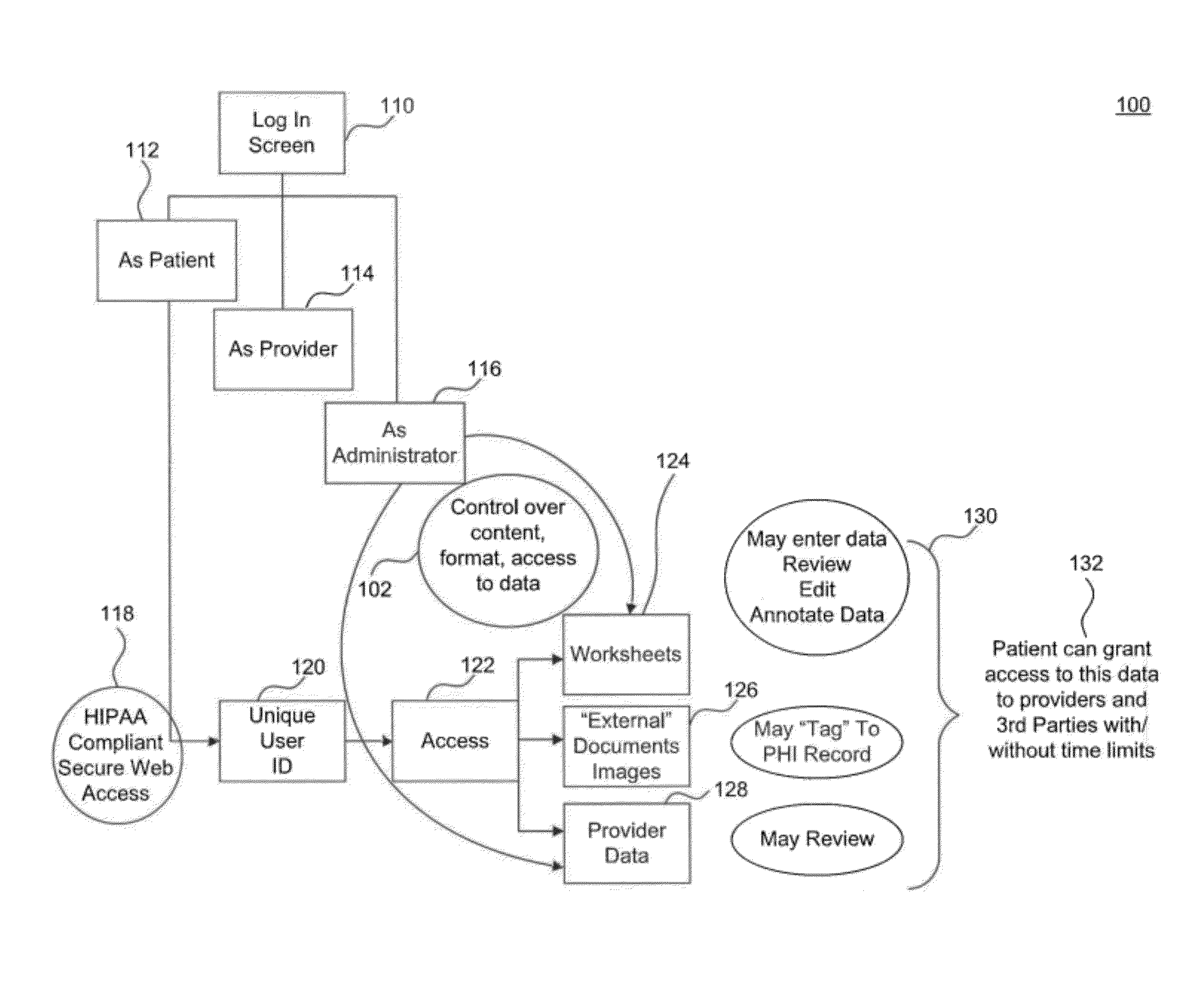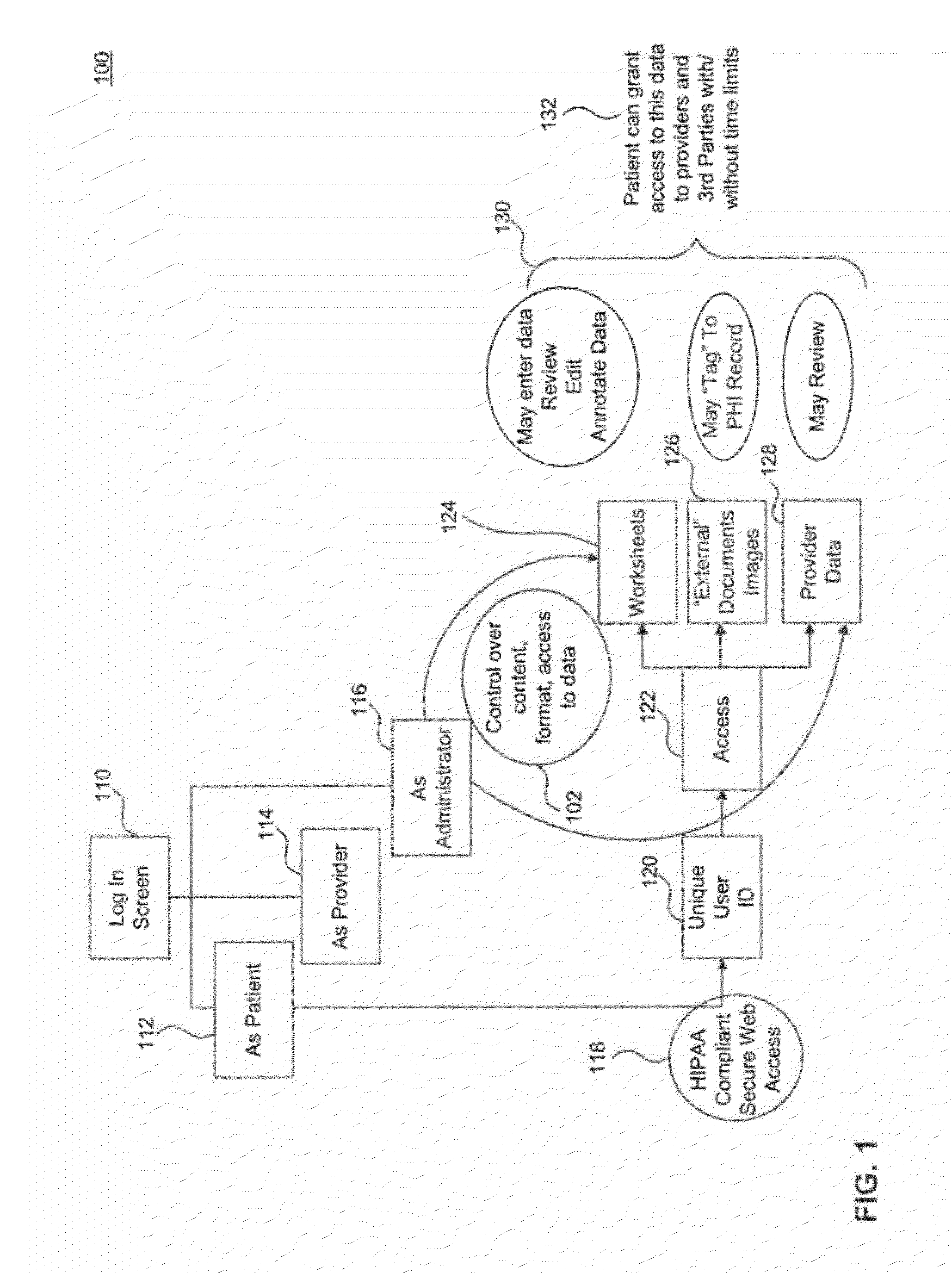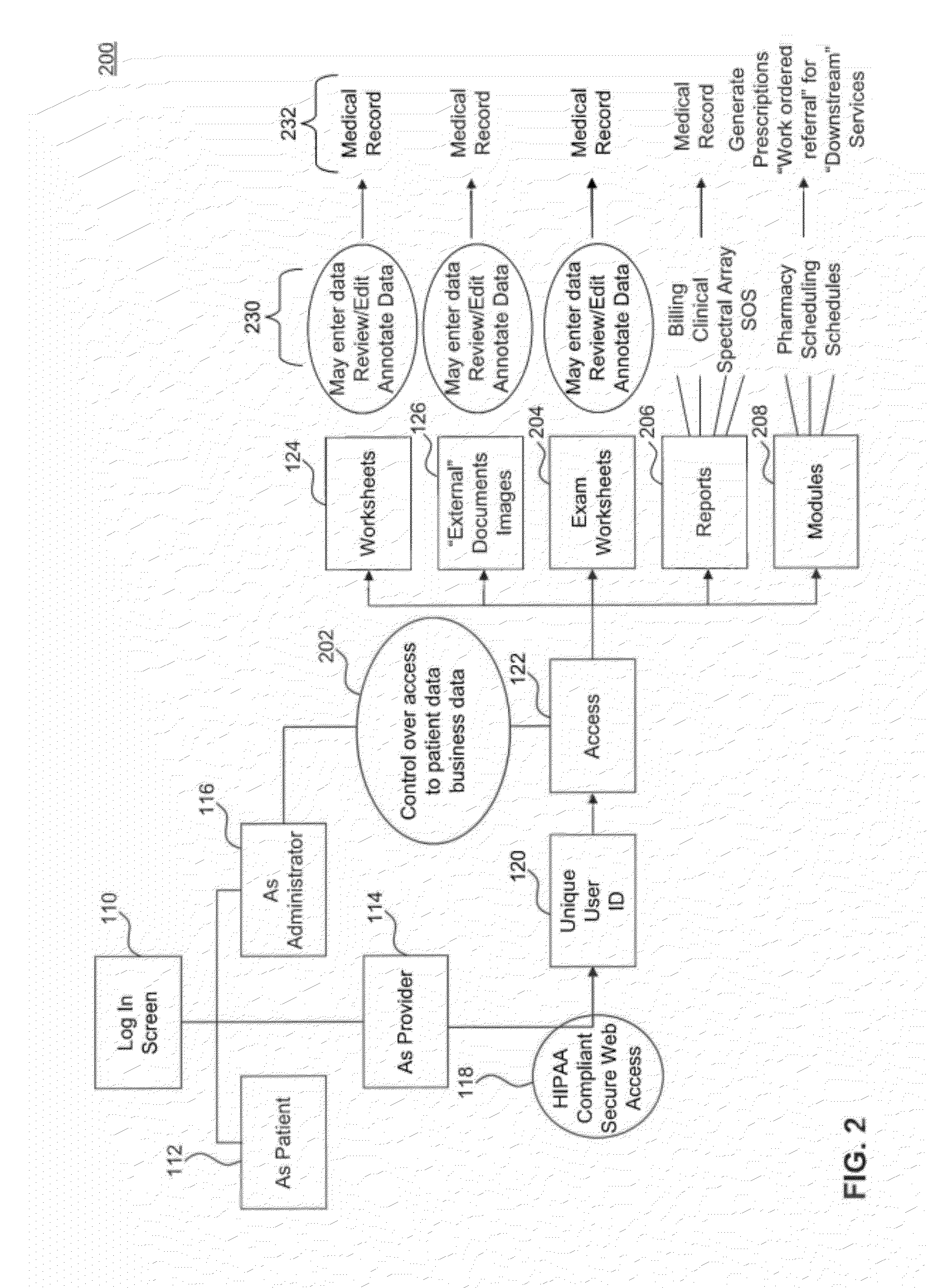System and method for conveying and processing personal health information
a technology for conveying and processing personal health information, applied in the field of health information, can solve the problems of limiting the capabilities of internet browsers installed, limiting the ability of mobile devices to display complex web content, and reducing inefficiencies, so as to achieve the effect of reducing inefficiencies
- Summary
- Abstract
- Description
- Claims
- Application Information
AI Technical Summary
Benefits of technology
Problems solved by technology
Method used
Image
Examples
embodiment
Method Embodiment
[0116]FIG. 12 provides a method 1200 for enabling user registration, login processing, and worksheet processing using a computing device. FIG. 12 is described with continued reference to the embodiments illustrated in FIGS. 1-11. However, FIG. 12 is not limited to those embodiments.
[0117]Method 1200 begins in step 1227.
[0118]In step 1227, login credentials for a user are received. As shown in FIG. 12, step 1227 may comprise receiving a unique user ID. In embodiments, login credentials may be received from a mobile device, a terminal, a PC, or a server.
[0119]In one embodiment, step 1227 is performed by use of a registration module. The registration module may be invoked after a user, such as a patient 112 or provider 114 accesses a web server by directing an Internet browser to a web site and furnishes login credentials using log in screen. Features of the registration module are described below with reference to the exemplary login screen provided in FIG. 13. After ...
PUM
 Login to View More
Login to View More Abstract
Description
Claims
Application Information
 Login to View More
Login to View More - R&D
- Intellectual Property
- Life Sciences
- Materials
- Tech Scout
- Unparalleled Data Quality
- Higher Quality Content
- 60% Fewer Hallucinations
Browse by: Latest US Patents, China's latest patents, Technical Efficacy Thesaurus, Application Domain, Technology Topic, Popular Technical Reports.
© 2025 PatSnap. All rights reserved.Legal|Privacy policy|Modern Slavery Act Transparency Statement|Sitemap|About US| Contact US: help@patsnap.com



